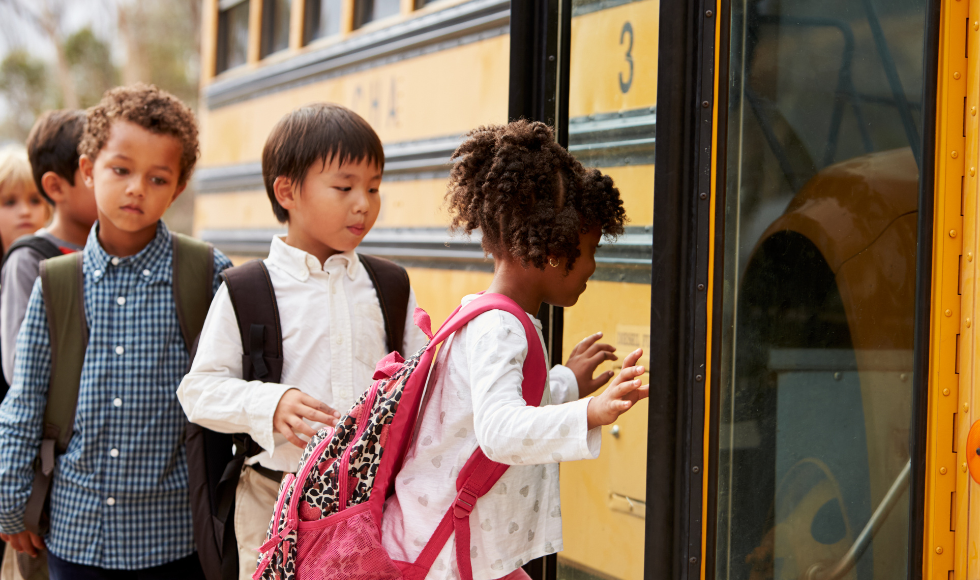Location, location, location: Study finds the value of living close to a school

Hamilton home values dropped 7.29 per cent for every extra kilometre of distance from the closest elementary school, and 1.43 per cent for every added kilometre distance from a high school, new research shows. (Shutterstock image)
BY Matt Innes-Leroux
September 26, 2023
A wave of school closures in Hamilton in the 2000s wiped millions of dollars from local property values, according to a new study from McMaster University and the University of Toronto.
Researchers looked at more than 5,500 real estate transactions in Hamilton and estimated the value of specific features of homes in the city’s urban boundary, including the distance to public schools in the Hamilton-Wentworth District School Board.
By estimating the price of individual features of homes using a sample of properties, researchers were able to isolate the contribution of each feature to the price of a property. Their analysis showed that the value of homes dropped 7.29 per cent for every extra kilometre of distance from the closest elementary school, and 1.43 per cent for every added kilometre distance from a high school.
“If closeness to a school is something that people value, they will pay extra money for it when they buy a house,” says lead author John Merrall, who began the research as part of his master’s thesis at McMaster.
“If you take two twin houses and put one closer to a school and the other farther away, the one that is closer to school is more valuable,” says Antonio Páez, senior researcher on the study and professor in the School of Earth, Environment and Society at McMaster.
“Distance to elementary schools is a more important consideration, because younger kids need to be driven or walked to school, while secondary school students move more independently.”
The study, published this month in the journal Geographical Analysis, was supported by a SSHRC Insight Development Grant shared by Páez and Christopher Higgins, an assistant professor of human geography at the University of Toronto.
Real estate data was supplied by the Realtors Association of Hamilton-Burlington and included extensive details of all properties sold.
“Our model isolated factors about the homes — how many bedrooms or bathrooms, is there a basement, how close they are to schools — and applied spatial analysis that hadn’t been used to look at this issue before,” Merrall says. “It gives us a much higher level of confidence than just looking at price data.”
The study was inspired by the closure of schools in Hamilton in the early 2010s: Fifteen elementary schools were closed in the studied area between 2005 and 2016, following a process known as Accommodation Reviews.
One such closure was Prince Philip Elementary School in Hamilton’s Ainslie Wood neighbourhood in 2014. The closure was a contentious local issue and the subject of a lawsuit from residents who alleged school board trustees had conflicts of interest because of the impact on property values.
Students from Prince Philip were transferred to Cootes Paradise Elementary School at the start of the 2014-15 school year, which meant most of them had a much longer trip to school.
“According to the analysis, every single property in Prince Philip’s catchment was affected to some degree, sometimes losing as much as 9 per cent of their value with the closure of the school,” says Páez.
“And while individually the depreciation may have been just a few hundred or thousand dollars per household, the collective loss was not negligible.”
Applying the model, the researchers estimated the closure of the school led to a collective loss of more than $4 million for homes in the old Prince Philip catchment area.
The drop in home prices connected with a school closure can hurt a municipality by lowering property-tax revenue, the researchers say.
“The Hamilton Wentworth District School Board appears to have worked at cross purposes with the City of Hamilton: The board saved money, but the city could have lost more in exchange,” Páez says.
“When a school closes, the province and the school board try to forecast how much money will be saved on maintenance and operations, but they’re not counting the potential loss of millions in surrounding property value that vanish with the closure,” says Páez.
“The value a school adds to a community could outweigh the cost of maintaining and operating it, but alas, this is not a factor considered in the process that leads to school closures in Ontario.”
“Closing a school could also push potential residents away and lead young families to choose somewhere else to live. This is a sad irony for a city that prides itself as the best place to raise a child.”


